
Soins (4)
L'orthodontie invisible Invisalign
Written by Bensoussan & Lucien | Chirurgiens dentistes | Antibes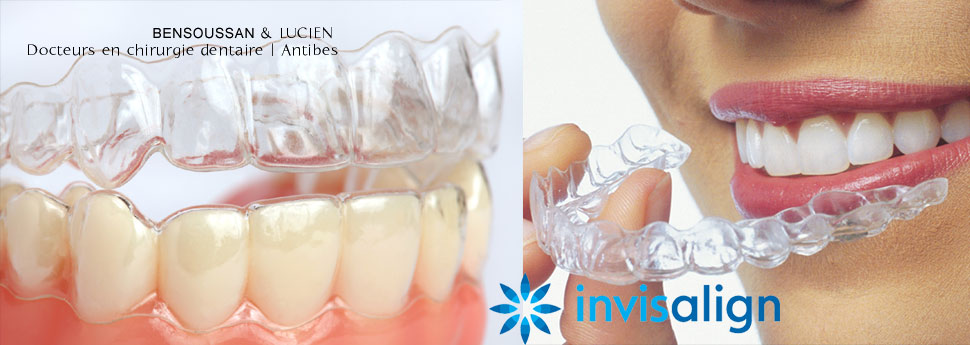
Un traitement à l'adolescence ou l'âge adulte n'est pas toujours facile à assumer pendant une période prolongée, que ce soit dans le domaine professionnel ou le domaine personnel.
Rassurez-vous, il existe une orthodontie invisible, nettement plus discrète que les bagues classiques, ce qui vous permettra de mieux accepter le traitement.
Orthodontie invisible : 3 types de traitements
Il existe trois appareils de traitements dentaires pour une orthodontie invisible :
- Bagues en céramique : elles peuvent aussi être transparentes, et elles sont reliées par un fil blanc qui se confond davantage avec les dents (pas totalement invisible) ;
- Orthodontie linguale : les bagues sont collées sur la face interne de vos dents pour qu'elles ne se voient pas, mais cet appareil est plus cher ;
- Gouttières transparentes : elles sont aussi efficaces que les bagues, elles apportent un confort esthétique incomparable , et vous pouvez les retirer lors des repas, ce qui vous facilite le nettoyage.
L'appareil dentaire transparent

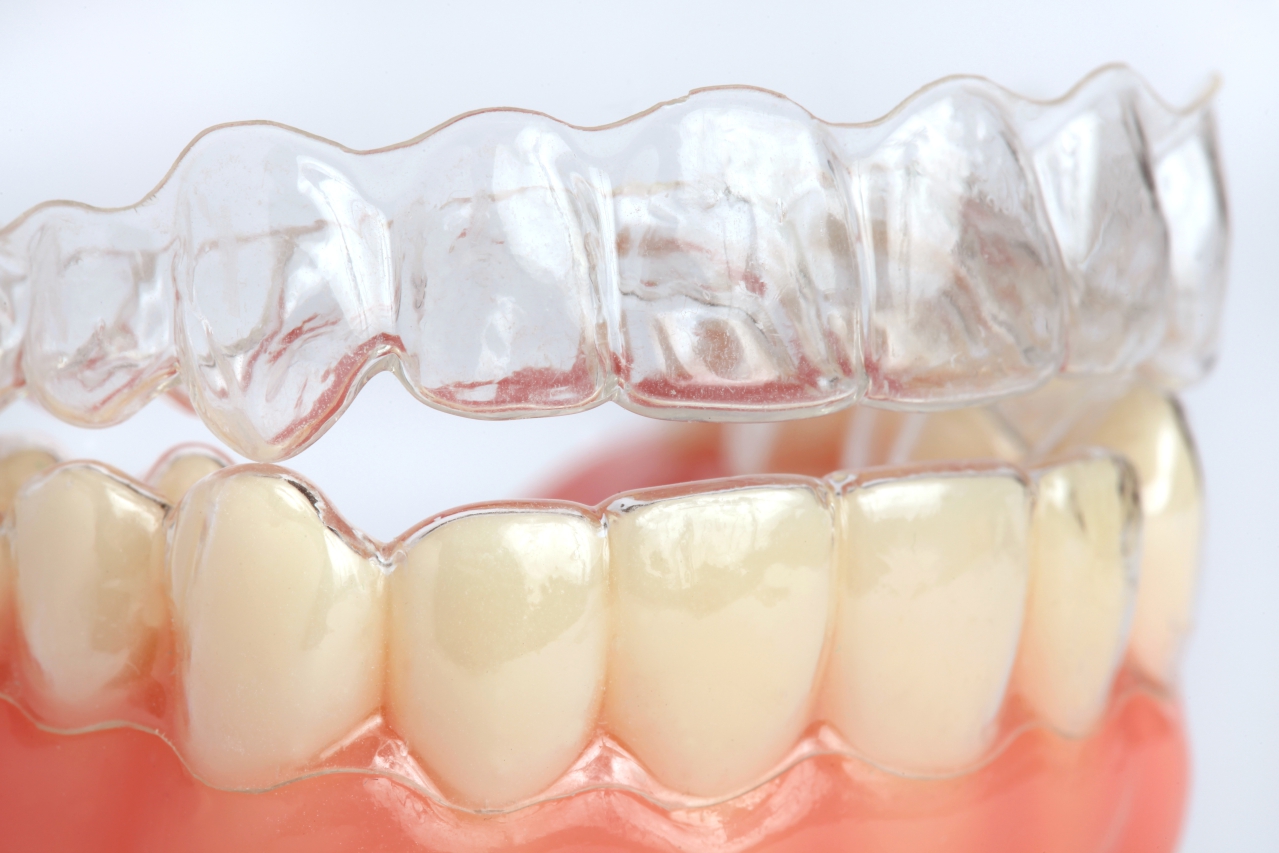
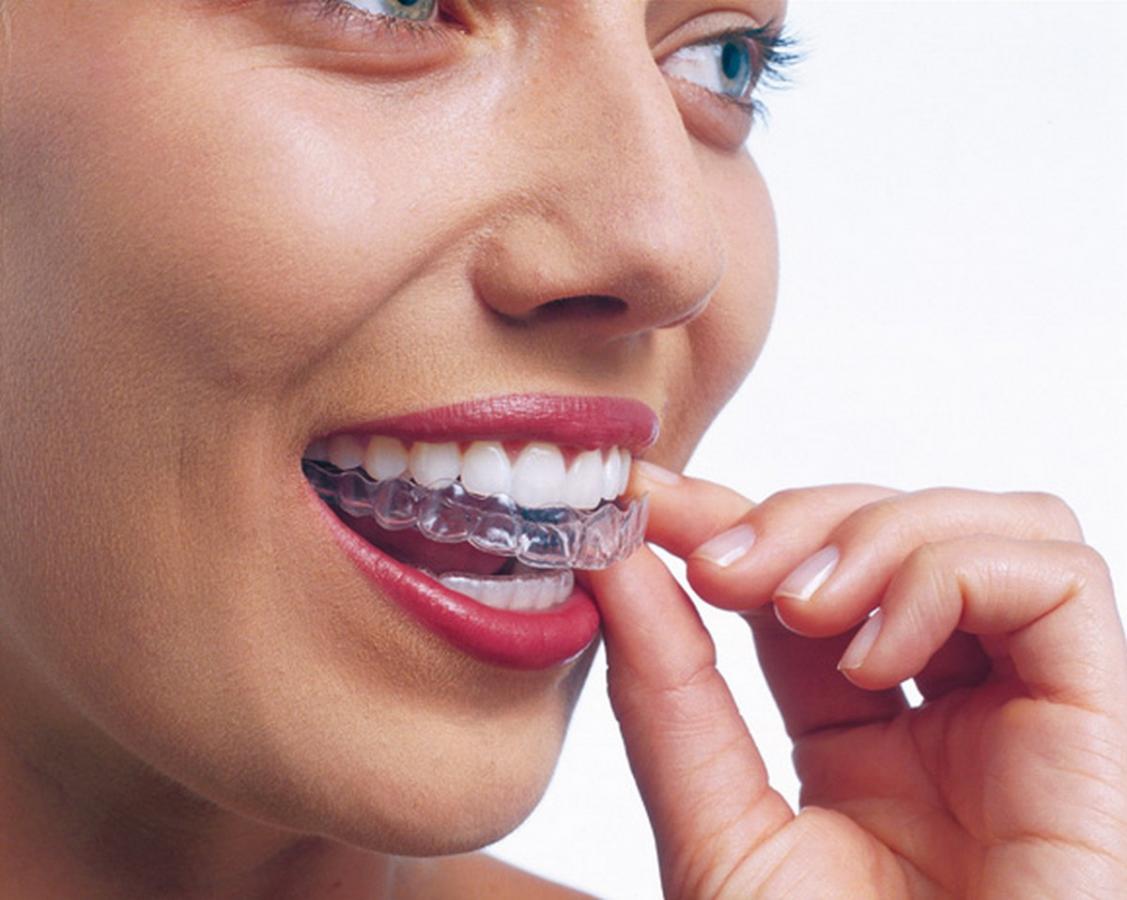
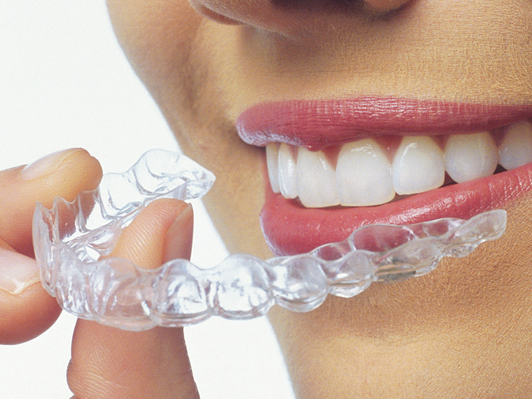
Les gouttières invisibles sont une technique d'orthodontie invisible encore peu répandue. On possède un énorme recul clinique sur cette technique, plus 3 millions de patients soignés a travers le monde , c'est la plus grosse base de données sur les traitements orthodontiques.
Cet appareil va parfaitement épouser la forme de vos dents, ce qui va permettre de les déplacer en douceur.
Vous devez porter ces gouttières toute la journée et toute la nuit pour qu'elles soient efficaces, 22H /24H mais vous devez les retirer lorsque vous mangez. Elles sont indolores et ne gênent pas trop l'élocution.
Qu'est-ce qu'Invisalign ?
Un sourire peut tout changer
Votre confiance en vous. Vos perspectives. Votre vie. Et avec Invisalign, obtenir le sourire dont vous avez toujours rêvé ne doit pas être un défi insurmontable. En fait, cela n'a pratiquement aucun impact sur votre vie quotidienne.
Invisalign aligne les dents en utilisant une série d'aligners amovibles et quasi invisibles, fabriqués sur mesure pour vos dents afin de garantir votre confort. Lorsque vous remplacez vos aligners toutes les deux semaines, vos dents se déplacent - petit à petit, semaine après semaine, jusqu'à la position finale prescrite.
Confortable, transparent et amovible - Invisalign transforme votre sourire sans rien changer à votre vie. Plus de 3 millions de patients à travers le monde l'ont déjà découvert.
Êtes-vous prêt(e) pour votre nouveau sourire ?
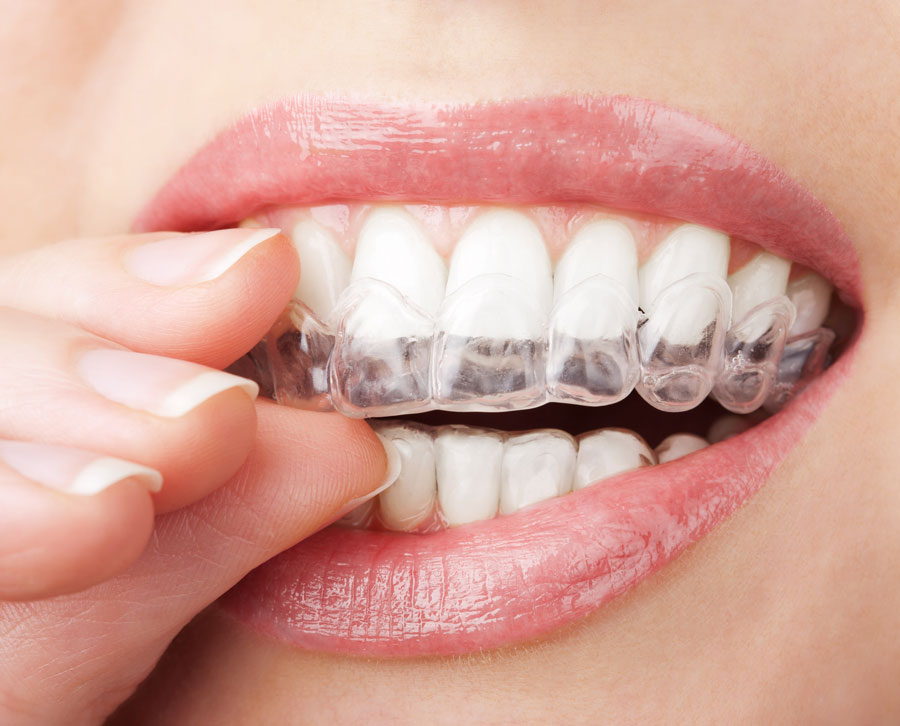
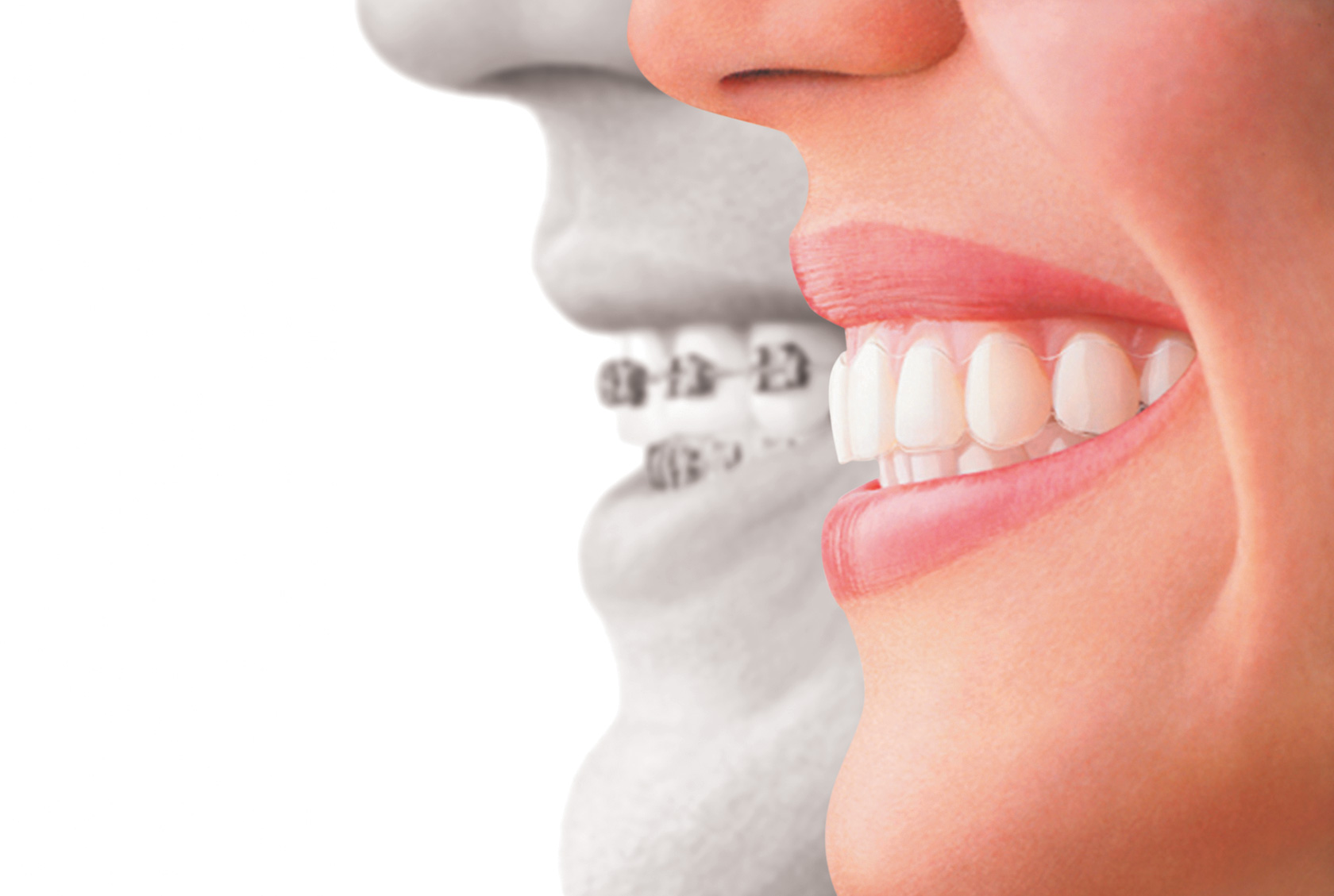
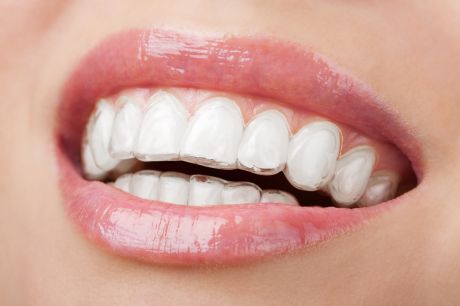
Dental implants
Written by Bensoussan & Lucien | Chirurgiens dentistes | Antibes La sédation consciente par inhalation du mélange équimolaire d’oxygène et du protoxyde d’azote (MEOPA) constitue en Odontologie Pédiatrique une excellente solution pour réduire l’anxiété et améliorer la coopération, permettant ainsi la réalisation des soins dentaires dans des meilleures conditions. Sa facilité d’administration, sa rapidité d’induction et d’élimination et le peu d’effets indésirables qu’il engendre font du mélange équimolaire d’oxygène et du protoxyde d’azote un agent sédatif de choix. La sédation consciente se révèle, de surcroît, être une alternative efficace à l’anesthésie générale chez les enfants peu coopérants, anxieux ou mentalement déficients devant bénéficier de soins dentaires.
La sédation consciente par inhalation du mélange équimolaire d’oxygène et du protoxyde d’azote (MEOPA) constitue en Odontologie Pédiatrique une excellente solution pour réduire l’anxiété et améliorer la coopération, permettant ainsi la réalisation des soins dentaires dans des meilleures conditions. Sa facilité d’administration, sa rapidité d’induction et d’élimination et le peu d’effets indésirables qu’il engendre font du mélange équimolaire d’oxygène et du protoxyde d’azote un agent sédatif de choix. La sédation consciente se révèle, de surcroît, être une alternative efficace à l’anesthésie générale chez les enfants peu coopérants, anxieux ou mentalement déficients devant bénéficier de soins dentaires.
Depuis la prise en compte prioritaire de la douleur provoquée par les soins, le MEOPA connaît actuellement un réel regain d’intérêt. Sa possibilité de prescription et/ou d’administration par des praticiens non anesthésistes contribue à cet engouement.
Le MEOPA est un auxiliaire précieux de notre exercice dès lors qu’il est administré selon un protocole bien établi et qu’on respecte les contre-indications d’usage.Restorative dentistry
Written by Bensoussan & Lucien | Chirurgiens dentistes | Antibes- Crowns

A crown is a type of dental restoration which completely caps or encircles a tooth or dental implant. Crowns are often needed when a large cavity threatens the ongoing health of a tooth. They are typically bonded to the tooth using a dental cement. Crowns can be made from many materials, which are usually fabricated using indirect methods. Crowns are often used to improve the strength or appearance of teeth. While inarguably beneficial to dental health, the procedure and materials can be relatively expensive.
The most common method of crowning a tooth involves using a dental impression of a prepared tooth by a dentist to fabricate the crown outside of the mouth. The crown can then be inserted at a subsequent dental appointment. Using this indirect method of tooth restoration allows use of strong restorative materials requiring time consuming fabrication methods requiring intense heat, such as casting metal or firing porcelain which would not be possible to complete inside the mouth. Because of the expansion properties, the relatively similar material costs, and the aesthetic benefits, many patients choose to have their crown fabricated with gold.
As new technology and materials science has evolved, computers are increasingly becoming a part of crown and bridge fabrication, such as in CAD/CAM Dentistry.
- Bridges.
A bridge is a fixed dental restoration used to replace a missing tooth by joining an artificial tooth permanently to adjacent teeth or dental implants.
Types of bridges may vary, depending upon how they are fabricated and the way they anchor to the adjacent teeth. Conventionally, bridges are made using the indirect method of restoration. However, bridges can be fabricated directly in the mouth using such materials as composite resin.
A bridge is fabricated by reducing the teeth on either side of the missing tooth or teeth by a preparation pattern determined by the location of the teeth and by the material from which the bridge is fabricated. In other words, the abutment teeth are reduced in size to accommodate the material to be used to restore the size and shape of the original teeth in a correct alignment and contact with the opposing teeth. The dimensions of the bridge are defined by Ante's Law: "The root surface area of the abutment teeth has to equal or surpass that of the teeth being replaced with pontics".
The materials used for the bridges include gold, porcelain fused to metal, or in the correct situation porcelain alone. The amount and type of reduction done to the abutment teeth varies slightly with the different materials used. The recipient of such a bridge must be careful to clean well under this prosthesis.
When restoring an edentulous space with a fixed partial denture that will crown the teeth adjacent to the space and bridge the gap with a pontic, or "dummy tooth", the restoration is referred to as a bridge. Besides all of the preceding information that concerns single-unit crowns, bridges possess a few additional considerations when it comes to case selection and treatment planning, tooth preparation and restoration fabrication.









